Citadel Colour Contrast – Part 1
Games Workshop introduced with their Contrast Colours a new part of their already quite broad painting range. But where does it come from and what does it do?

Among the early days of Games Workshop, when they shifted from being a distributor and publisher towards the miniature tabletop company we know today, Citadel Miniatures played an important part in this. And they did not only supply the assortment with miniatures, but paints and brushes too. Of course, back in the day we were far away from the broad range of glazes, technicals and such, but even those first paints made similar to the miniatures a bold first impression.
One of the people, who coined the Citadel Painting and the 'Eavy Metal Studio, was without any doubt Mike McVey. There is an interesting interview on him on Realm of Chaos 80s. And there you can see the very first Citadel Colours, tall round pots, that are available until today by Coat d'Arms. If the size and shape of these bottles seems familiar to you, even if you haven't been around 'til the early days of the hobby, which might be due to Privateers P3 and Wargames Foundry using the same pots.
Even back then, it was not just paints, you had the regular Citadel Paints with some iconic colours like Goblin Green (the base trim for decades), Snakebite Leather (re-introduced as a Contrast Colour), Chaos Black and Skull White, but already diluted, thinner paints to use for shading / washes, the legendary Inks. First deployed as small drop bottles, but quickly repacked as the regular pots, but with black lids. Back in the day, those paint pots had 20 ml of liquid content.
The next iteration of Citadel Colours were hex pots with a flip lid. The colour names stayed the same, but the range grew. There were regular paints with white lids, metallics with black lids and the mentioned above inks with a blue lid. Those were around in the mid to late 90s and sold individually, but quite often as a starter package in a Citadel Colour Paint Set, with eight paints, one metallic paint and an ink, along with a starter brush and a plastic Chaos Warrior and Space Marine. I even have the two from my old paint set around. Yes that is one of my very first painted miniatures on the right. Of course with Goblin Green base!
But those got replaced by new paint pots, reducing the content down to 12 ml per pot. Clear bottom, black screw top with dents in it. Those were around in the early 2000s and got an update a couple of years later, when they moved from screw tops back to flip tops. These new colours weren't produced by Coat d'Arms anymore and caused a bit of trouble. One of the reason why they switched from the screw top back to the flip top, was that paint got stuck in between and made it impossible to open those paint pots. In general the new mixture was a bit thicker and more prone to dry out.
Around 2008 the Citadel Colour range got an addition of new paints, among them the "new" old washes and a new type of colour, called foundations. Both came in new pots, again flip top, but with a black top for the washes and a white one for the foundations. Foundations were quite thick paints that enabled you to paint a covering layer of paint directly onto the miniature, usually with a single coat. They had some amazing colours among them, but the pigments tended to separate within the paint. Shakers helped a bit, but due to the thickness of the paint, those balls would often dry up with the paint.
In 2012 a huge change was done again, the olds pots were removed from the range and the entire Citadel Colours range was re-vamped - 144 new paints - including the names. It was unsure, why they exactly did that. There were rumours that they didn't have the copyrights to the names and the manufacturer had claims to the mixtures. So the new range wasn't compatible towards to the old one. There was a matching sheet in a White Dwarf, but that didn't really help, as some paints were matched to two different tones and such. Many people who were in the middle of project got rather frustrated. It is worth pointing out that there is a conversion sheet for the pre-2000 colours with Coat d'Arms, most of the colours match the old ones, but not all and the washes are not the classic ink sets.
Nowadays the Citadel Colour range is incredibly broad, with a more sophisticated approach. You have base paints (who replaced the foundation series), layers, shades and such, with different thickness and coverage, to match your paint style. You can do the old Fast-Army-Painter techniques, with simple base colours and a wash for depth, along with a light drybrush. Or you can go for zenithal primer, build up multiple thin layers, to recreate the different shades of shadows and highlights. Even airbrush colours and the latest addition are Contrast Colours. Unfortunately those replaced the glazes. And there are multiple Technical Paints, giving you easy access to effects like snow, rust or crackled surfaces. Paint aids that so far needed either rather ambitious tutorials and / or paints, that you would only get from more expert scale model companies.
Over the years, since the very beginning multiple paint compendiums were released, some general on Citadel miniatures, other on specific factions like Space Marines. Even the older ones, especially the first ones, are quite the interesting read, as some of the techniques are still valid and current, even after 30 years. At some bring and buys you might be lucky and get your hands on some of these books. They occasionally pop up on eBay and such. If you can score them for a small buck, it's worth it, especially if you're into the nostalgia.
Of course Games Workshop's Citadel colours aren't the only one on the market, many of other miniature companies have their own paint ranges (Privateer Press and Wargames Foundry both use the same pots as the Coat d'Arms / old Citadel paints). Similar to some miniatures companies, for example Mantic and Warlord Games being founded by former Games Workshop employees, so was one of the competitors of Citadel - The Army Painter. What began as a three product dip-range, is now a full set of paints and washes. And other companies, like Vallejo or Ammo paints come from the model kit building, and usually have more subtle, toned down paints, to match with the often historical, military models they are used on. One of the biggest advantages of the Citadel range is the availability and of course that you can try them out right in the store, something that some but not all FLGS offer.
Oh and for the love of god, I know that they are cheaper than other paints and broadly available where you can buy model kits and such. But please, stay away from things like the enaml or email colours. I know, 20 something years ago, when I started as a young lad, I thought it wouldn't matter. After painting the first time with some proper acrylic paints, it was just such a revelation and I never went back to that dark and hapless place. And neither should you. So learn from the mistakes others have done, get yourself a couple of proper paints to begin with.
If you want to read more on the topic, there is an article on the Citadel Paints on Talk Wargaming, along with a History of Citadel on Warhammer Community.
That's it so far about the history of Citadel Colours, in the next article I'm going to try out the new Contrast paints by Citadel.
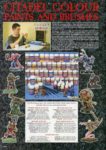

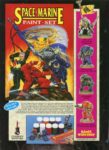

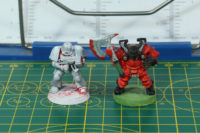
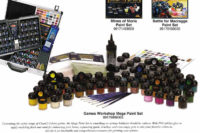
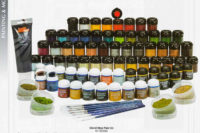
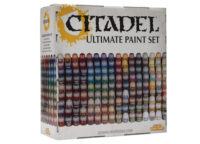
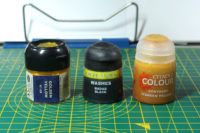
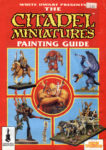
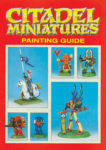
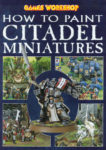
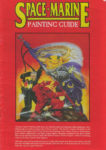
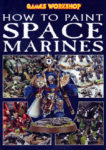












Leave a Reply